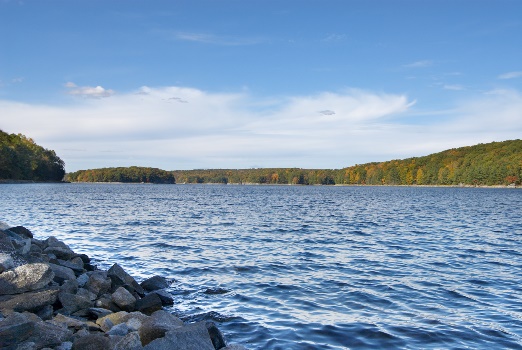Source Protection for Municipalities
Protecting the Source
Municipalities are a vital partner in protecting drinking water sources. Town agencies and departments have an important role to play.
- Land Use: Land use agencies help protect drinking water when reviewing project applications and enforcing regulations.
- Stormwater Management: Public Works departments help protect drinking water when maintaining storm water infrastructure and performing winter road maintenance.
- Open Space: Land use planning efforts protect drinking water when open space is prioritized.

Required Land Use Notifications, Easy as 1-2-3
Connecticut General Statutes (C.G.S.) §8-3i(b) requires that land use applicants determine if their project or petition falls within a public drinking water supply watershed or aquifer protection area and so indicate on their application to the local land use agency. For projects or petitions that fall within these protected areas, applicants must provide a copy of their proposal to both the drinking water utility and Connecticut Department of Public Health for review and comment.
Step 1
Step 2
Step 3
Project Review and Inspection
When reviewing applications, we assess the potential for adverse impacts to water quality due to the nature of the proposed land use. Common concerns are the presence of fuel and chemical storage, stormwater management, septic design and separation (buffers) from wetlands, watercourses, or drinking water wells. We also assess the adequacy of the erosion and sediment control proposed during construction. Once projects get started, we use the authority given by C.G.S. §25-51 to make routine inspections to assure erosion and sediment controls are installed and maintained.
We need your help! When we discover deficiencies at a construction site, we make an effort to resolve concerns with the builder. In cases where our concerns are not addressed, we will notify local Health Directors, Zoning or Inland Wetland staff to pursue enforcement of regulations and permit conditions to protect the public water supply.

CT Guidelines for Soil Erosion and Sediment Control
Click HereAdditional Resources from CT DPH
Resources for Public Works
Aquarion's Watershed Inspection Program
Our watershed land and Aquifer Protection Areas are dominated by residential development. Connecticut General Statutes (CGS 25-51)) and Regulations of CT State Agencies (RCSA 19-13-B102(b)) authorize and require that we inspect private property where there is a potential to pollute public water supplies. Impervious surfaces, fuel storage and lawn chemicals are all potential sources of residential pollution. The most common threat of pollution from homes is septic systems. Poorly maintained septic systems can contribute disease-causing pathogens and excess nitrogen to our water supplies. We inspect over 1000 homes each year as part of our program to protect Aquarion's water supply. When we identify failed septic systems, we work with local town health departments to ensure repairs are made.
